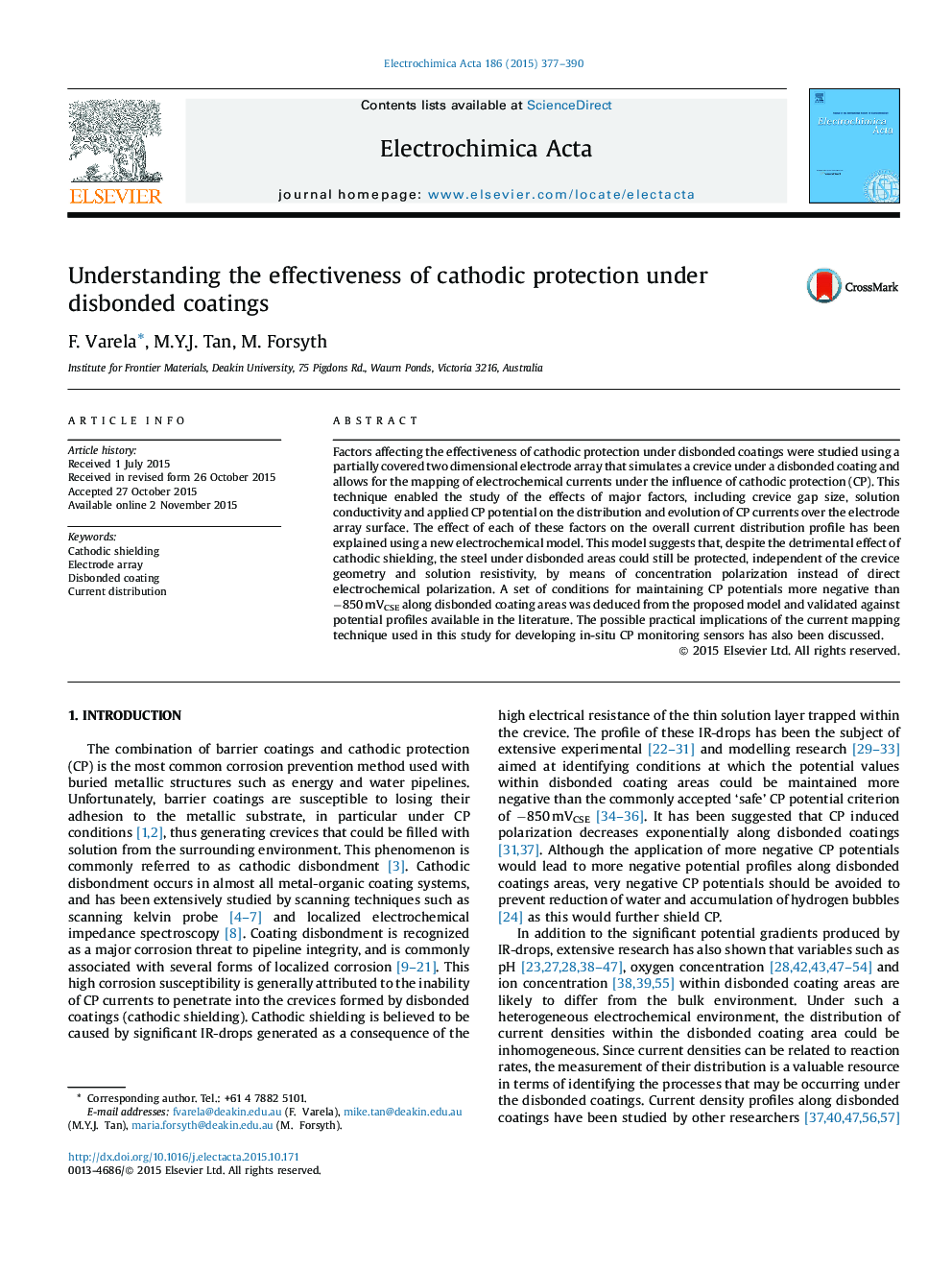| Article ID | Journal | Published Year | Pages | File Type |
|---|---|---|---|---|
| 183580 | Electrochimica Acta | 2015 | 14 Pages |
•A systematic study of CP current distribution under disbonded coatings is presented.•The effects of CP potential, solution conductivity and crevice gap size have been analysed.•It has been found that local pH determines the rate of corrosion at CP shielded locations.•The accuracy and limitations of prior mathematical models have been experimentally assessed.•A new model is presented to explain the CP current distribution under disbonded coatings.
Factors affecting the effectiveness of cathodic protection under disbonded coatings were studied using a partially covered two dimensional electrode array that simulates a crevice under a disbonded coating and allows for the mapping of electrochemical currents under the influence of cathodic protection (CP). This technique enabled the study of the effects of major factors, including crevice gap size, solution conductivity and applied CP potential on the distribution and evolution of CP currents over the electrode array surface. The effect of each of these factors on the overall current distribution profile has been explained using a new electrochemical model. This model suggests that, despite the detrimental effect of cathodic shielding, the steel under disbonded areas could still be protected, independent of the crevice geometry and solution resistivity, by means of concentration polarization instead of direct electrochemical polarization. A set of conditions for maintaining CP potentials more negative than −850 mVCSE along disbonded coating areas was deduced from the proposed model and validated against potential profiles available in the literature. The possible practical implications of the current mapping technique used in this study for developing in-situ CP monitoring sensors has also been discussed.
